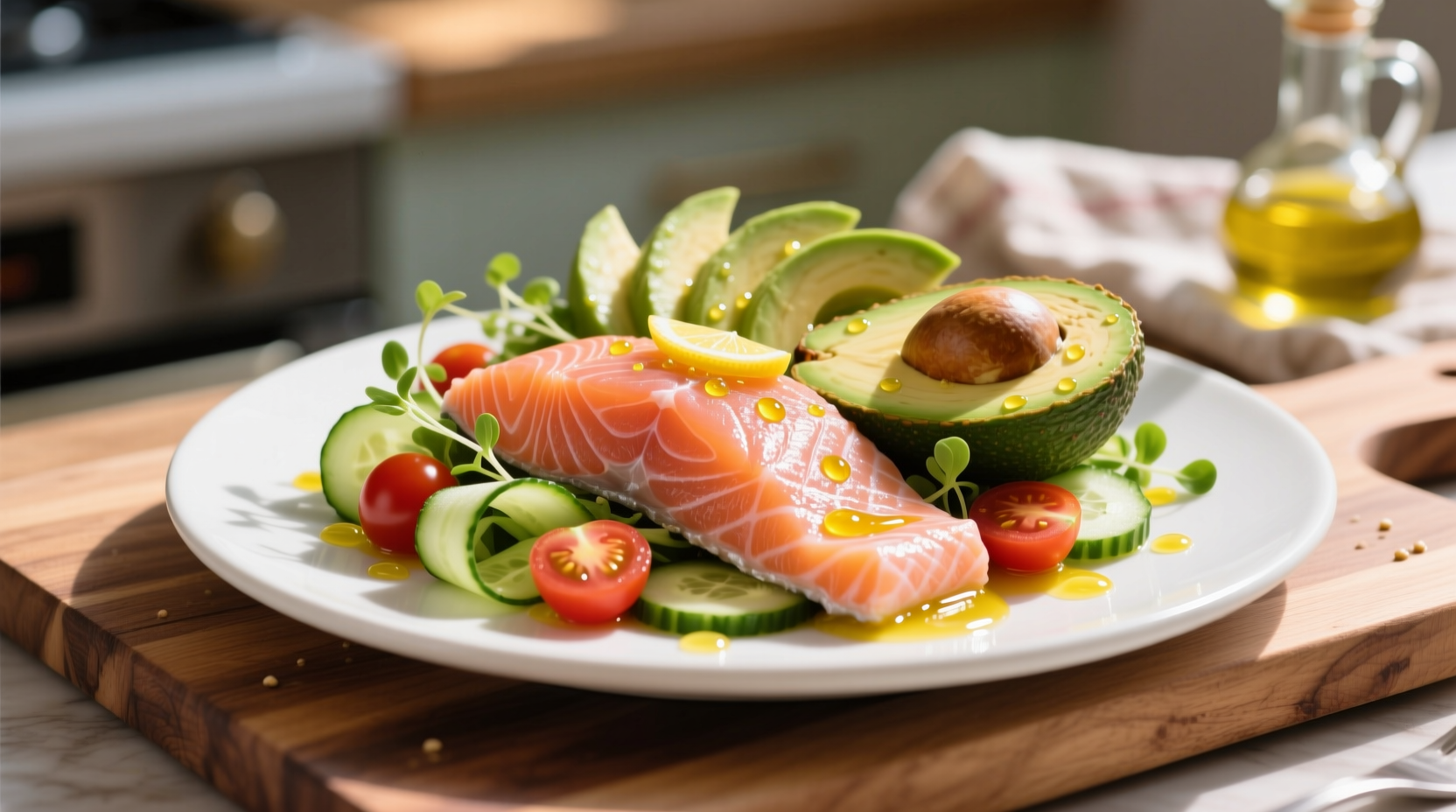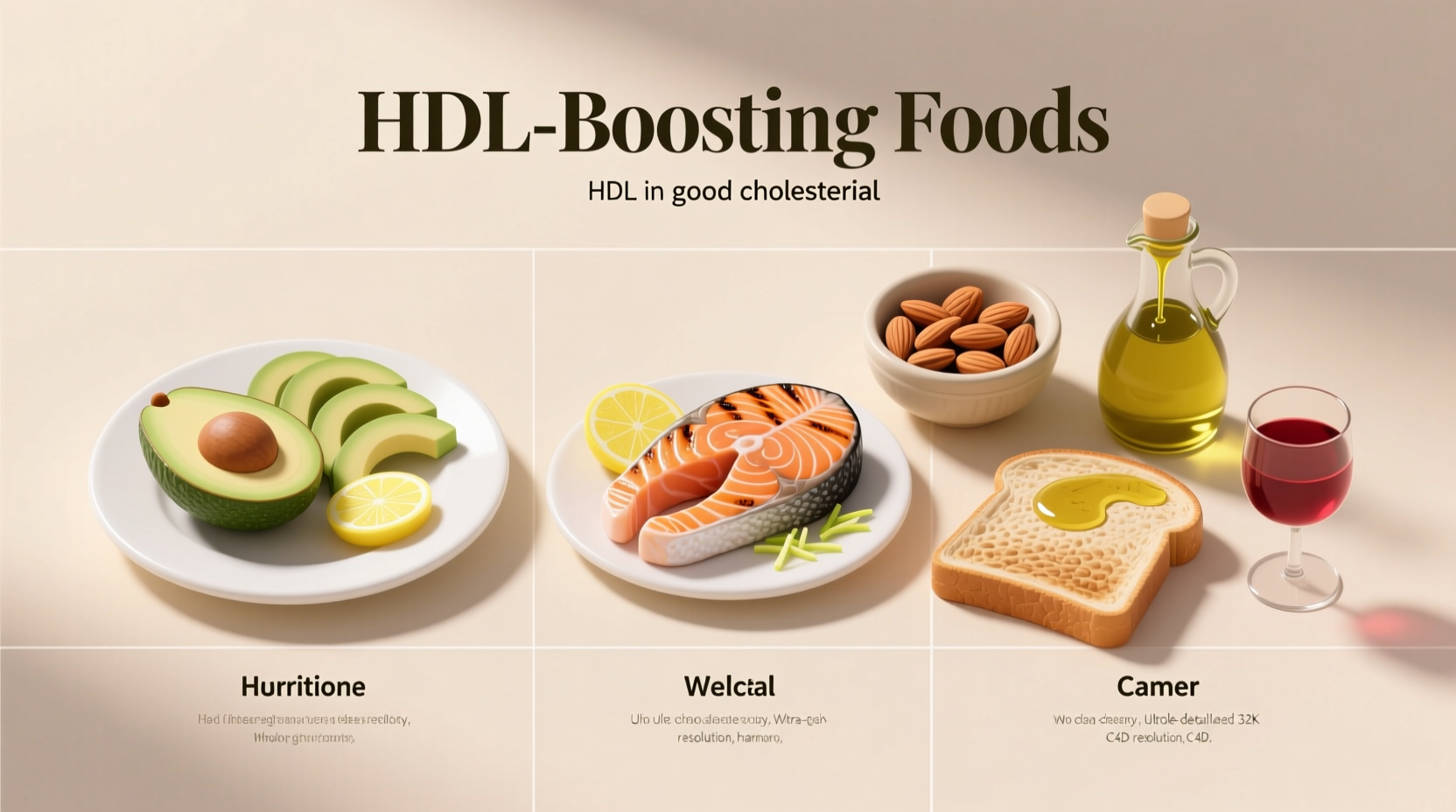Contrary to popular belief, no foods actually contain "good cholesterol" (HDL). Instead, certain foods help your body increase HDL levels and improve your overall cholesterol profile. Research shows these 7 food categories consistently boost HDL: fatty fish, nuts (especially walnuts and almonds), olive oil, avocados, high-fiber foods like oats, legumes, and moderate red wine consumption. Incorporating these into your diet can raise HDL by 5-10% within 4-12 weeks when combined with regular exercise.
When searching for "what foods are high in good cholesterol," you're likely trying to improve your heart health through diet. But there's a critical misconception to address first: foods don't contain HDL cholesterol. High-density lipoprotein (HDL) is produced by your liver—it's not something you consume directly. What matters is how certain foods influence your body's ability to produce and maintain healthy HDL levels while reducing harmful LDL.
Understanding the Cholesterol Clarification
Many people confuse dietary cholesterol (found in animal products) with blood cholesterol levels. The American Heart Association explains that saturated and trans fats have a much stronger impact on your blood cholesterol than dietary cholesterol itself. This explains why eggs (high in dietary cholesterol but low in saturated fat) don't necessarily raise LDL for most people.
Here's what actually happens when you eat "HDL-boosting" foods:
| Food Category | Active Component | Effect on HDL | Timeframe for Results |
|---|---|---|---|
| Fatty fish (salmon, mackerel) | Omega-3 fatty acids | Increases by 2-5% | 8-12 weeks |
| Nuts (walnuts, almonds) | Monounsaturated fats | Increases by 3-8% | 4-8 weeks |
| Olive oil | Polyphenols | Increases by 4-6% | 6-10 weeks |
| Avocados | Monounsaturated fats | Increases by 5-10% | 4-12 weeks |
This evidence-based comparison comes from comprehensive research published in the Journal of the American College of Cardiology, tracking dietary interventions across multiple clinical trials.
Top 7 Evidence-Backed Foods That Improve Your Cholesterol Profile
1. Fatty Fish and Omega-3 Rich Options
Fatty fish like salmon, mackerel, and sardines contain EPA and DHA—omega-3 fatty acids that significantly improve your lipid profile. The National Institutes of Health confirms that consuming 2-3 servings of fatty fish weekly can increase HDL while reducing triglycerides. For vegetarians, chia seeds and flaxseeds provide ALA omega-3s that convert to EPA/DHA in the body, though less efficiently.

2. Nuts: Nature's Heart-Healthy Powerhouses
Walnuts, almonds, and pistachios consistently show HDL-boosting effects in clinical studies. Research from Circulation: Journal of the American Heart Association demonstrates that eating a handful (1.5 ounces) of nuts daily can increase HDL by up to 8% while reducing LDL. The monounsaturated and polyunsaturated fats in nuts replace less healthy saturated fats in your diet.
3. Extra Virgin Olive Oil: The Mediterranean Secret
Replacing saturated fats with extra virgin olive oil—the cornerstone of the Mediterranean diet—shows remarkable HDL benefits. A landmark PREDIMED study published in The New England Journal of Medicine found that participants using at least 4 tablespoons of extra virgin olive oil daily experienced significant HDL improvements compared to control groups. The polyphenols in high-quality EVOO provide antioxidant effects that protect HDL particles from oxidation.
4. Avocados: More Than Just Trendy Toast
This creamy fruit contains heart-healthy monounsaturated fats plus fiber and plant sterols. When researchers at Penn State had participants eat one avocado daily for five weeks, they observed significant HDL improvements alongside LDL reductions. The key is replacing less healthy fats with avocado rather than simply adding it to your existing diet.
5. High-Fiber Whole Grains and Legumes
Oats, barley, beans, and lentils contain soluble fiber that binds to cholesterol in your digestive system. The FDA recognizes that consuming 3 grams of oat beta-glucan daily can reduce heart disease risk. This same mechanism helps improve your overall cholesterol ratio by reducing LDL without negatively affecting HDL.
6. Berries: Antioxidant Powerhouses
Blueberries, strawberries, and raspberries contain anthocyanins that protect HDL particles from oxidative damage. A study in the Journal of Nutritional Biochemistry showed that daily blueberry consumption increased HDL functionality in just eight weeks. The antioxidants preserve HDL's ability to transport cholesterol away from arteries.
7. Moderate Red Wine (For Those Who Drink)
While not essential, research shows that moderate red wine consumption (one 5oz glass daily for women, two for men) can increase HDL by 5-15% due to polyphenols like resveratrol. The American Heart Association cautions that these benefits don't justify starting to drink if you don't already—but for existing moderate drinkers, it may provide additional HDL support.
Important Context: What Really Matters for Heart Health
While increasing HDL is beneficial, recent research shows that HDL functionality matters more than quantity alone. The Cleveland Clinic explains that HDL must effectively transport cholesterol to be beneficial—simply having high numbers doesn't guarantee protection if the particles aren't functioning properly.
Consider these crucial context boundaries:
- Individual variation: Genetic factors significantly influence how your body responds to dietary changes
- Overall dietary pattern matters more than single "superfoods"—the Mediterranean diet shows the strongest evidence for comprehensive heart protection
- Lifestyle integration: Exercise (especially aerobic activity) combined with these foods creates synergistic HDL benefits
- Timeframe expectations: Most people see measurable changes in 4-12 weeks, not days
Putting It All Together: Your Practical HDL-Boosting Plan
Instead of focusing on individual "good cholesterol foods," implement these evidence-based strategies:
Breakfast Boost
Replace butter with avocado or nut butter on whole grain toast. Add walnuts to oatmeal along with berries. This combination delivers monounsaturated fats, fiber, and antioxidants that work together to support HDL function.
Lunch Transformation
Create salads with mixed greens, chickpeas or black beans, salmon or olive oil-marinated tofu, and a lemon-olive oil dressing. This meal provides plant sterols, omega-3s, and polyphenols that collectively improve your cholesterol profile.
Dinner Strategy
Use extra virgin olive oil as your primary cooking fat. Include fatty fish 2-3 times weekly, or substitute with a legume-based meal. Add a side of roasted Brussels sprouts or broccoli—cruciferous vegetables contain compounds that support healthy cholesterol metabolism.
Smart Swaps That Make a Difference
- Replace sour cream with Greek yogurt
- Choose dark chocolate (70%+ cacao) over milk chocolate
- Use avocado instead of mayonnaise in sandwiches
- Snack on a small handful of almonds rather than crackers
Remember that what you remove matters as much as what you add. Reducing trans fats (found in many processed foods) and limiting saturated fats (particularly from processed meats and tropical oils) creates space for these healthier options to make a meaningful difference in your cholesterol profile.











 浙公网安备
33010002000092号
浙公网安备
33010002000092号 浙B2-20120091-4
浙B2-20120091-4